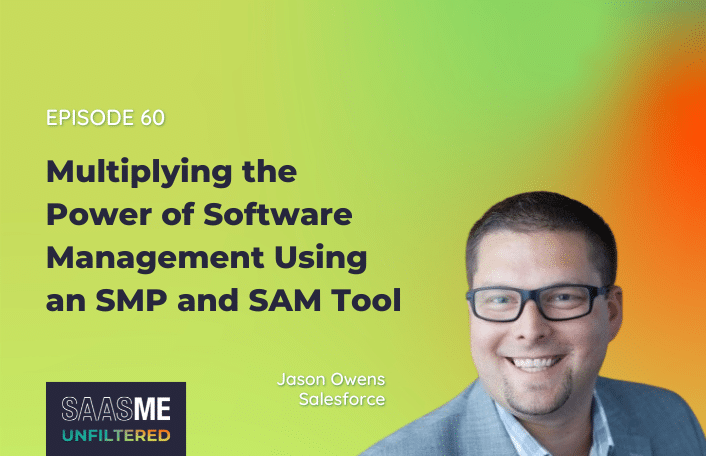The ITAM Roundup: 5/12/24
DocuSign acquires AI-powered contract management firm Lexion
DocuSign, amidst potential sale talks to private equity, acquires contract workflow automation startup Lexion for $165 million. Incubated at the Allen Institute for Artificial Intelligence, Lexion offers AI-powered contract management solutions, expanding beyond legal departments to address various document creation challenges across multiple teams. The acquisition aims to enhance DocuSign's contract management capabilities, leveraging Lexion's technology for deeper contract insights and risk identification, while also potentially bolstering its appeal amid reported sale negotiations.

Microsoft’s VMware Rapid Migration Plan: Not as shiny as it looks
Microsoft's VMware Rapid Migration Plan aims to attract discontented Broadcom VMware customers with incentives such as discounts on Azure VMware Solution, Azure credits, and extended Reserved Instance options, among others. However, while some benefits may seem novel, others, like Extended Security Updates and Azure Hybrid Benefit, are already available to Azure users, prompting skepticism about the true value of the plan, according to analysts.

Boomi burnishes API management capabilities
Boomi enhances its API management capabilities with the Boomi AI Agent Framework, introducing four agents for automation. Boomi Answers offers AI-driven prescriptive help, while Boomi DataDetective classifies and protects data fields. Boomi also announces acquisitions to strengthen its API management offerings, addressing market needs for federated API management and scalability.

Exchange Server Subscription Edition: It’s happening (in Q3 2025)
Microsoft is set to release Exchange Server Subscription Edition (SE) in Q3 2025, signaling the end of support for Exchange Server 2016 and 2019 without extensions or Extended Security Updates (ESUs). The transition to SE will require swift upgrades, with the first Cumulative Update (CU) expected in late 2025, following a process designed for rapid adoption. Exchange Server SE will adopt a subscription-based licensing model similar to SharePoint Server SE, emphasizing ongoing payments for access to support, security updates, and patches.

Red Hat Middleware Licensing White Paper
Red Hat's middleware portfolio offers powerful tools for enterprise application development, deployment, and management, built on open-source frameworks. Understanding the licensing complexities, primarily based on "Core Bands," is crucial for efficient utilization and cost management. Alex from Licenseware has published a white paper, providing detailed insights into licensing requirements, optimization strategies, and end-of-life transitions.

SugarCRM vs. Salesforce: A feature-by-feature Comparison
SugarCRM and Salesforce are compared in terms of customization, scalability, integration options, customer support, and overall value for money. While SugarCRM offers tailored solutions for smaller businesses with extensive customization options, Salesforce excels in scalability and integration for larger organizations. Both platforms provide comprehensive CRM tools, but Salesforce generally leads in innovation and features.
Multiplying the Power of Software Management Using an SMP And SAM Tool with Jason Owens (Salesforce)
In this podcast episode, Jason Owens from Salesforce emphasizes the critical role of Software Asset Managers in driving digital transformations within companies. He discusses the challenges of managing both on-premises software and SaaS within the tech stack, advocating for the use of both a SaaS Management Platform (SMP) and a SAM tool for unparalleled visibility and cost optimization.

Why you need to consider vendor certifications in your SAM strategy
Considering vendor certifications in your Software Asset Management strategy is crucial due to the complexity of software licensing, especially for enterprises managing thousands of licenses with varying specifications. Selecting the right SAM tool is essential, but blindly relying on data normalization rates can be misleading, as they can be manipulated. Vendor verification programs like Oracle's GLAS and IBM's IASP ensure accurate software usage data, helping customers trust their purchasing decisions and stay aligned with licensing requirements.

The CDO’s Survival Guide: Navigating the Data-driven Minefield
The role of Chief Data Officer (CDO) demands visionary leadership and technological proficiency to navigate the complexities of data-driven strategies effectively. CDOs are pivotal in driving organizational success by leveraging data to unlock business potential, yet they face challenges such as short tenures and fragmented data landscapes. To thrive in this role, CDOs must adopt a holistic approach, prioritizing strategic alignment, fostering a data-centric culture, and orchestrating reliable data pipelines to drive digital transformation and deliver tangible business outcomes.
https://www.spiceworks.com/tech/it-careers-skills/guest-article/cdo-data-driven-leadership/
6 lessons to learn from the 60-year history of the modern mainframe
The modern mainframe, with a rich history spanning 60 years, continues to teach valuable lessons in innovation, reliability, and adaptability. Despite misconceptions, mainframes remain relevant, integrating emerging technologies like AI and machine learning while maintaining their critical role in industries like banking and healthcare. Looking forward, the future of mainframe computing lies in hybrid cloud solutions, where the power of mainframes converges with the scalability of cloud infrastructure, offering new opportunities for innovation and growth.

Critical vulnerabilities in BIG-IP appliances leave big networks open to intrusion
Critical vulnerabilities discovered in the BIG-IP Next Central Manager, utilized by many major networks, pose a severe risk of intrusion, granting attackers full administrative control over internal devices. While some vulnerabilities have been acknowledged and patched by F5, others remain unaddressed, leaving the extent of protection uncertain. With potential exploitation paths allowing for remote administrative control and creation of hidden accounts, urgent patching is advised to mitigate the substantial security threat these vulnerabilities pose.












